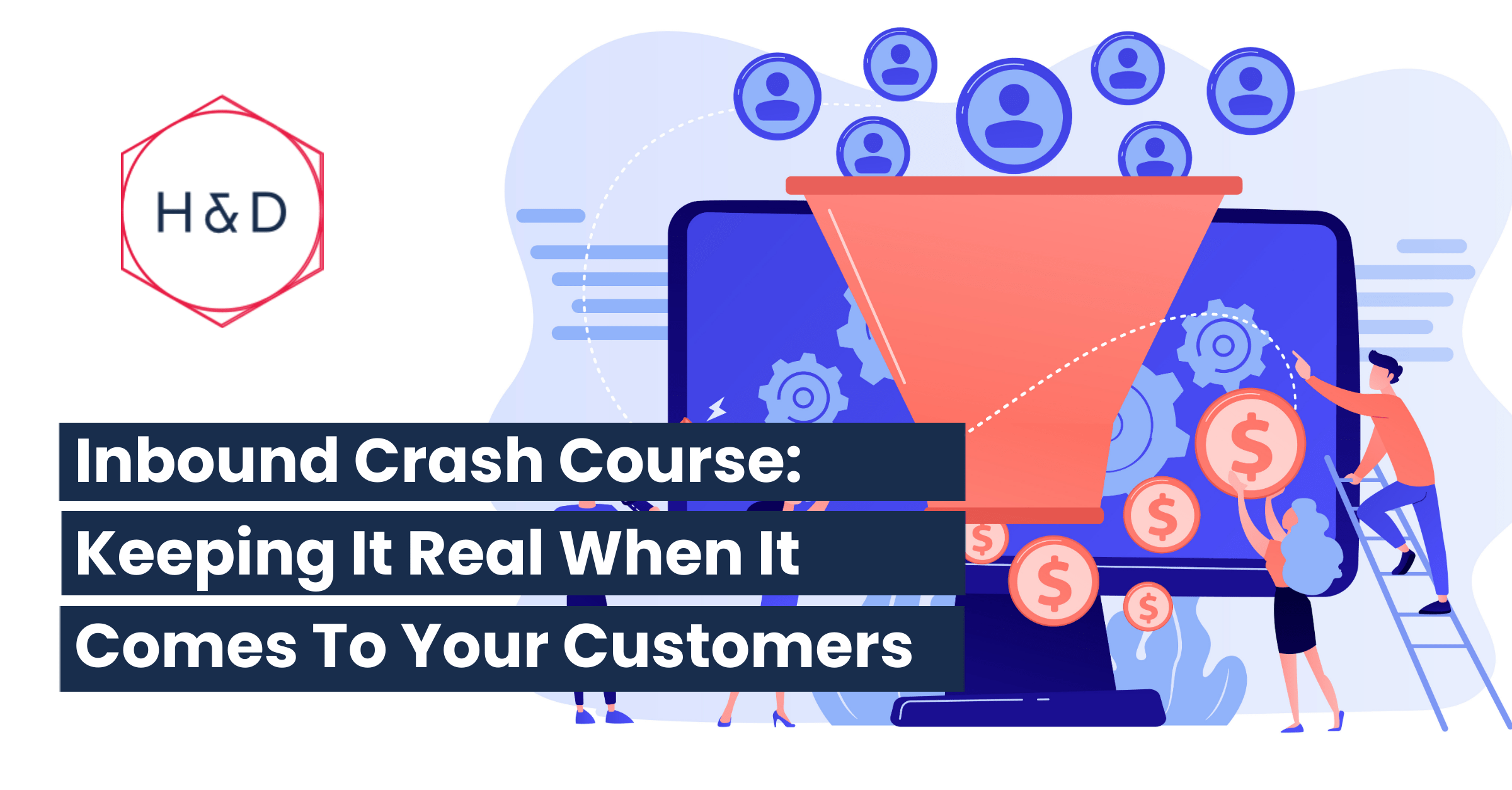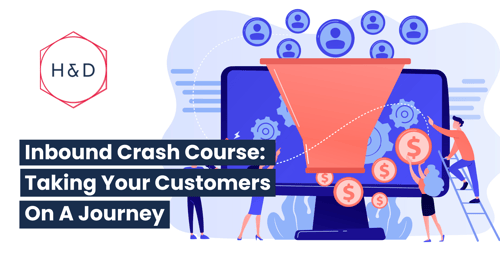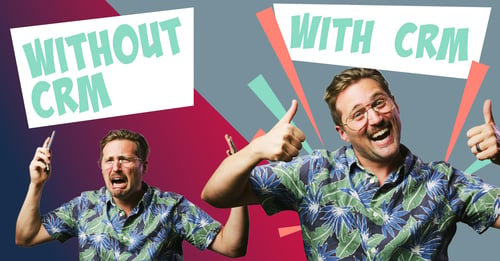
What’s a persona?
Yeah that’s a good question to kick things off! A persona is a fictional character, but one that is created from the facts you know about your customers. (So while the personas themselves aren’t real people, they have the qualities of your real customers, if that makes sense.) To create personas, you need to collate what you already know about your customers with some research to fill in the gaps. Then put it all together to determine what are the common traits. You next take these very real attributes to create the fictional characters of your customers – your personas.
Here is an example of one of ours.

“I already know my customers and I know what they want”
That’s a common reaction, but there are a couple of things wrong with that sentiment: “I already know who my customers are and I know what they want”. You see, it’s not about you, you have to take yourself out of the equation. Personas will help you get to the truth of your users’ needs, experiences, behaviours and goals by taking your personal preferences out of the process – to ensure you are only focussing on the needs of your target market.

That’s important because customers don’t care about your business needs, they care about their own needs. But the good news is that in my experience, having a user-centric approach always seems to result in better business outcomes in the long run. But don’t just take my word for it, take the words of Jesse James Garrett:
“User-centered design means understanding what your users need, how they think, and how they behave — and incorporating that understanding into every aspect of your process.”
So let’s start understanding who these customers are, what makes them tick, and how to help them reach their goals.
The step-by-step guide to creating a great persona
1. Do your research
Compile the existing customer data you can review (such as recent research, support tickets and emails, 3rd party research on your industry, etc.). Speaking with people who work with your customers every day, such as sales and customer service, can also be very helpful to help you understand what products and services resonate with your customers and what challenges they face when dealing with your organisation.
Determine a standard set of questions to ask your ideal customers. Ask them about their needs, goals and expectations. The questions should aim to gain insight around potential opportunities for your organisation and be designed according to whether you focus primarily on B2B or B2C.
Questions typically include:
- Personal background: Age, gender, family situation, where they live, education and hobbies
- Work background: Role, responsibilities, challenges, organisation industry, size and structure
- ‘Watering holes’: How they learn about more information, what websites, blogs, etc, do they follow, what social networks they use
- Shopping preferences: How they prefer to interact with vendors, how they use the internet to research information
- Your organisation opportunity: e.g. problem they are trying to solve, products/services they are interested in, questions they may have when accessing products/services
You can survey your customers (in order of effectiveness) face to face, on the phone or via on online survey.
We recommend interviewing at least 10 customers for each persona you are looking to develop.
2. Analyse your data and create your personas
From your interviews you will likely to have already started to form a bit of a picture of who your target personas are going to be. But do review your data and pull out trends to start to outline the key aspects of each of your personas.
I aim to have at least 2, but no more than 4 personas. The motivations of each one should be fundamentally different - remember personas are not demographic profiles, so don’t fall into the trap of creating personas to fit a missing gender or age group. Also, remember that personas should represent your ‘ideal’ customers. That means even if a large number of current customers have a different profile, they should not be represented by one of your personas if they are not the customers you are aiming for.
Once you have your personas outlined it is time to fill in the details.
A good persona will include:
- Name and photo - make sure that your photo is candid and feels like a real person, not a stock photo of a posed model. Also, I don’t like using cartoons or illustrations - your persona photo is the first thing that your team will see when meeting your personas, so it is important that they immediately feel like a real person.
- Top level details: Age, education, job role, where they live, where they work
- Their story: A few paragraphs on who the person is, their hobbies, family life, fitness regime, favourite food, where they work, what they do day to day, and their current motivations that make them an ideal customer for your organisation
- Goals and challenges: Areas that your organisation could support them in.
- How to connect: places for discovery and inspiration as well as online research, you can also include key messages or tone.
- The opportunity: specific areas where your organisation can help the persona, key questions and proof that they may require when assessing and choosing a partner/product/service.
Next, test them with your key stakeholders, and other individuals who know your customers, to check that they feel right. You’ll be surprised. If you’ve followed the process, they will seem like very real and recognisable people to the stakeholders in your business.
3. Use your personas
So you have personas who represent your ideal customers - now you need to incorporate them into your process.
Some ways to do this that I have found successful are:
- Print out your personas in a large format and put them in visible places around the office.
- Add them to your intranet and induction process.
- Just like any new person who joins your organisation, you need to introduce them to your team and explain how they will fit in.
- When designing new products, services, marketing, etc, decide up front who your primary target persona is, have your persona ‘in the room’ during ideation and continuously refer back to their needs, goals, wants and challenges when going through the design process.
- If you are running an agile process and creating user stories, replace As a Sales Manager, As a customer, statements with your persona name, e.g. As Michelle, As Jason.
- Personas can change over time, just like real customers, so remember to communicate and celebrate persona changes and milestones.
- Add your personas to reporting to see how well you are tracking against growing and connecting with this customer base.
4. Use your personas to segment your customers
At the heart of inbound is connecting with the right customers, at the right time, in the right place, with the right message, and for good reason:
[Personalised emails] drive 18 times more revenue than broadcast emails.
(HubSpot, Source)
However, even with the best tools, trying to individualise every message and journey would be impossible. So personas are a great tool to map customer journeys and messaging to ensure a personalised experience that is relevant to the users motivations.
At Hype & Dexter we use personas to support:
- The ideation and design of campaigns.
- Swapping out of messaging and calls to action throughout the user journey.
- Kick off nurturing flows to support the persona goals, questions and challenges.
If you are using marketing automation software (such as HubSpot, Marketo, etc) you can automatically associate your contacts with personas based on their actions. So if they interact with a specific campaign, reading specific blog posts, visit more or less frequently, etc, you can start to identify which persona they might best fit.
You can also get customers to self identify when completing forms, by including a field with the key aspects of each persona.
Oh, and there’s a thing called ‘Anti Personas’
These do not need the full research and definition process, but can represent your not ideal customers. If users demonstrate behaviours of your anti personas you can potentially remove these contacts from your sales process.
Putting all this into action
It sounds like a lot of work, so is it all worth it? Well I have one more stat for that which might convince you:
71% of companies who exceed revenue and lead goals have documented personas
(Source: Understanding B2B Buyers Benchmark Study, Cintell)
So you’ll probably want to give it a shot!
In my next post I will show you how to create customer journeys that will resonate with your personas and drive your inbound campaign.
Talk soon,
Alex
|
|




